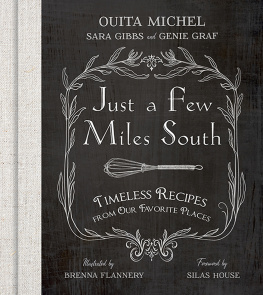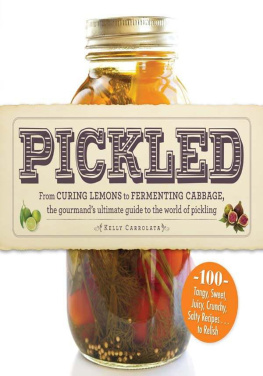


Published by American Palate
A Division of The History Press
Charleston, SC
www.historypress.com
Copyright 2020 by Ann Lemons Pollack
All rights reserved
Front cover, top left: courtesy of the author; top right: courtesy of the author; bottom left: courtesy of the National Museum of Transportation; bottom right: courtesy of the author.
Unless otherwise noted, all images are courtesy of the author.
First published 2020
e-book edition 2020
ISBN 978.1.43967.167.2
Library of Congress Control Number: 2020941808
print edition ISBN 978.1.46714.512.1
Notice: The information in this book is true and complete to the best of our knowledge. It is offered without guarantee on the part of the author or The History Press. The author and The History Press disclaim all liability in connection with the use of this book.
All rights reserved. No part of this book may be reproduced or transmitted in any form whatsoever without prior written permission from the publisher except in the case of brief quotations embodied in critical articles and reviews.
For all the ones Ive fed before.
Contents
Acknowledgements
Iconic Restaurants of St. Louis is a labor of love. Make no mistake, it was definitely labor. The encouragement of my family and friends, offers of art from two gifted women and the assistance of many professionals from the hospitality industry made it all possible.
The dedication of this book, which is to the people Ive fed, begins, of course, with my family. There is no question that I need to offer gratitude to my children, who support me as much (or more) as I have supported them. Terry and Jennifer Lemons, Wendy Pollack and Dara Pollack Silverberg and their spouses and partners, Jane, Lamar and Eric, have been patient with both my elated raves and grumbling conversations. The next generation, Ben, Sarah, David, Mattye, Tom Even, Hanne Elise, Elaine and Aliyah, and their partners and offspring make me smile, especially when I watch them at table (or other locations of being nourished, referring to our newest, Emberly). And a happy flap of the flour-crusted apron to my cousin Dawn Lockwood, always ready to talk food, especially baking.
My best friend from our days in nursing school, Mary Mallory, Auntie to the next generations, is always there for me. Her Majesty Sally I, Potato Queen and Duchess of Escargot and her consort, Mr. T, Esq., are valuable resources, well beyond being brunch mates. Old pals Ron, Bill and Gerry have been happy to be fed and to talk about food and everything else, including having my back when I was beating my head against the wall.
Founder and proprietor of Annie Gunns, Thom Sehnert, searched high and low for a photo of his flood-inundated restaurant. I regret that technical problems with reproduction kept us from using it, but Thom and his two resident wine geeks, Glenn Bardgett and John Cain, were full of good suggestions. Father and son Michael and Paul Beffa, who closed their old place and then reopened Beffas with even more hours and more choices, gave me a warm welcome. Blueberry Hills Joe Edwards was happy to offer assistance and turned me over to his daughter Hope Edwards for some technical help with artwork. At Chuck-A-Burger, Ron Stille told great stories with much laughter. Jim Fiala, who first spied us as he peered out from a kitchen in Manhattan, allowed me good access to the restaurant on a day with the light just right and answered many questions. Cake queen Lia Weber, formerly of Hendels and TLCs Next Great Baker, gave me plenty of info. Charlie Gitto is always fun to talk to and to pass on a story or two. Ellen Cusumano shared photos with me and talked about her grandparents who started Kemolls.
Qui Tran patiently answered my questions about his familys Mai Lee. Life within a delicatessen was what Alan Protzel talked about when I called him. The store was founded by his father, was owned by his late brother and him and is now run by his son. Alan Buxbaum answered some of my questions about Rizzos Top of the Tower. Don Casalone has an apparently bottomless supply of old ads, which hes been generous enough to allow use of. One of the founders of Schlafly, the St. Louis Brewery and the Tap Room, Dan Kopman, as usual, was a font of knowledge, dates and proper spellings. From Sidney Street Cafe, Chris Nashan updated me on several things. Jeanne Venn, concierge extraordinaire at the Chase Park Plaza, told great stories about the Tenderloin Room, but, as is the nature of her profession, discreetly left other tales pretty much alone. Stories of Tonys restaurant, especially in its early days, came from Tony Bommarito; James Bommarito gave some of his valuable time to give me updates on their pending move. Trattoria Marcellas Steve Kormorek was kind enough to talk about how it all evolved and about a few of his customers. Anent St. Louis Union Station, Nancy Milton led the way and brought me to Darlene Menietti, the unofficial resident historian of the historic building. Further assistance with images came from Teresa Militello and Charles Taylor with the National Museum of Transportation. At the Missouri History Museum, Lauren Salwasser helped me through the maze. Larry Giles, creator of the National Building Arts Center, dug out a fine piece of Vitrolite from the now-gone Popes Cafeteria downtown on Washington Avenue for me to photograph.
Who would have thought to find a photograph of Mammer Jammer in a gallery in Carmel, California? Robin Winfield had a fine one and gave me permission to use it. And Marilynne Bradley, the St. Louis queen of watercolor, always a help, gave permission to use her Schneithorsts painting.
Im happy to give a final tip of the hat to Greg and Ann Rhomberg, whose enthusiasm and support for St. Louis nostalgia is nothing short of remarkable.
And, as will always be, to Joe.
Merci beaucoup, as our founding mother, Madame Laclede, would have said, to all.
Introduction
What is an iconic restaurant? This book is the offshoot of my previous one, Lost Restaurants of St. Louis. As I wrote the latter book, at my publishers preference, I discussed only a few of the great restaurants of St. Louis that were still in existence. So, when The History Press approached me to do a second book as part of its Iconic Restaurants series, it seemed like the logical next step.
What makes a restaurant iconic? The term icon has another meaning, of course, beyond that for religious images (the original use of the word) and those wee computer images were urged to click on. It comes to us from the Greek word eikenai, meaning to seem or be like. Im happy to use the definition an emblem or representative symbol.
Many of the eating spots in the previous book were indeed iconic, like Tony Fausts and the Parkmoor, of course. But here was a chance to examine other places St. Louisans remember and, in many cases, can return to. Not all of the restaurants I include here are open, to be sure, but the great majority are.
As I look at the group, one theme stands out. These are stories about familiesfamilies working hard, working together, not only to make a living but also to share with their community. In many cases, its the American dream personified. Make no mistake, this is hard work, from coming up with the capital necessary for opening the doors to showing up early every day. Owners, said my late husband, Joe Pollack, for many years the restaurant critic at the
Next page









